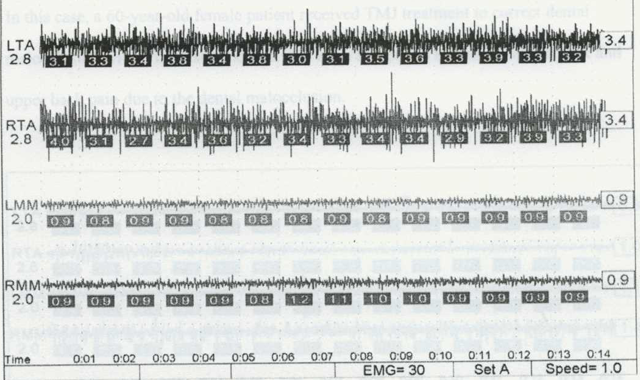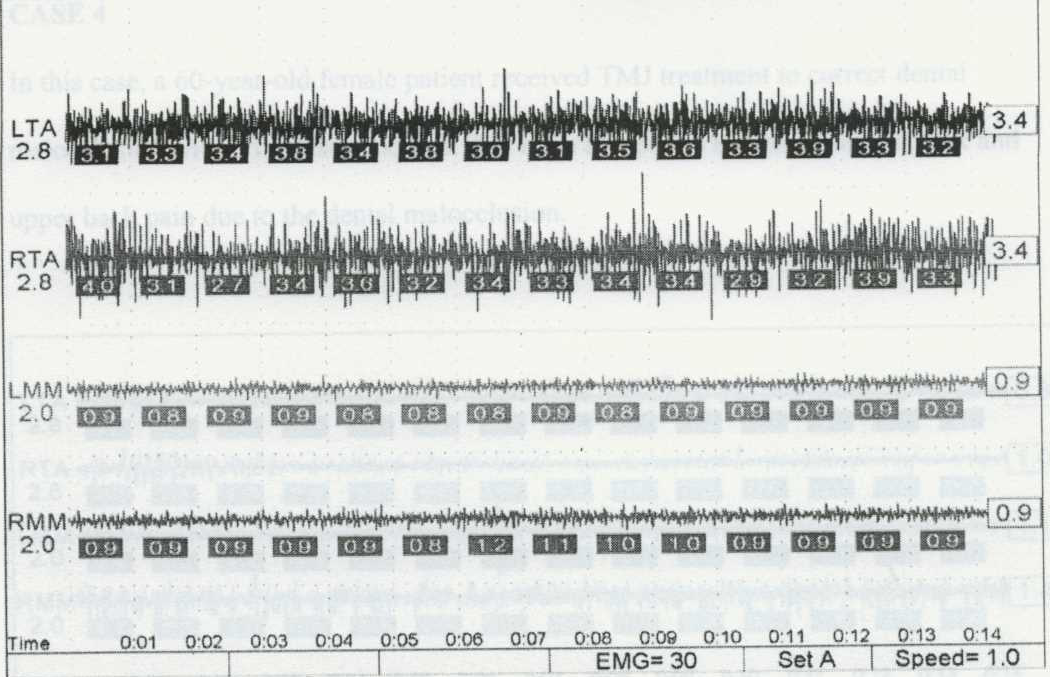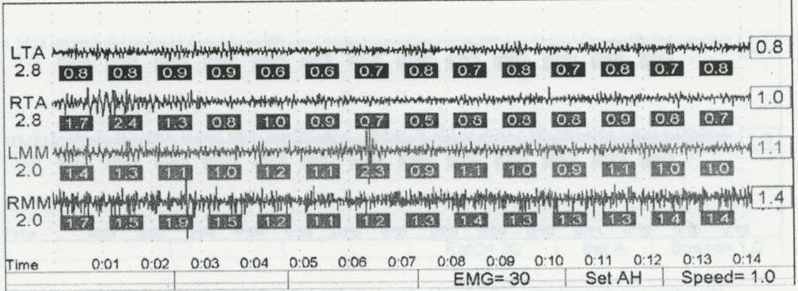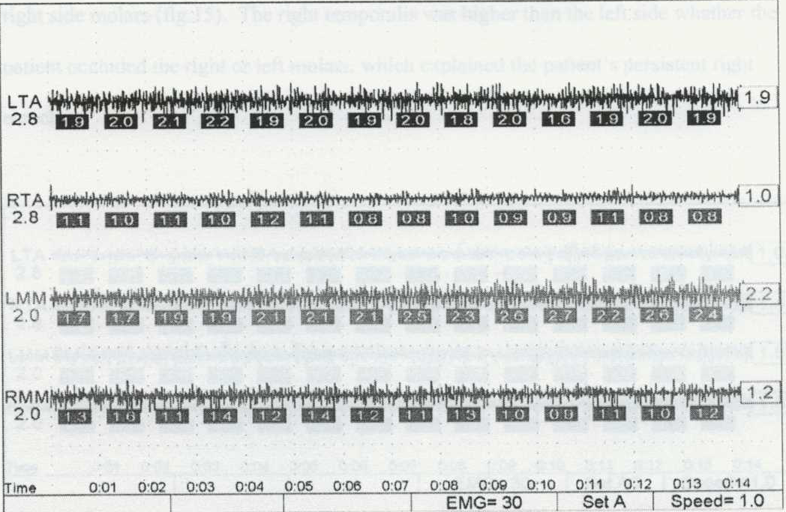Can acupuncture help with pain caused by dental malocclusion?
Two studies examined EMG findings from pre- and post-acupuncture treatment in patients with dental malocclusion to see if acupuncture can have an effect on patient pain.

An EMG is the study of the electric activity of the muscles. The purpose of studying an EMG is to evaluate and record the electrical activity produced by the skeletal muscles. Masticatory muscles in patients with dental malocclusion remain in the state of continuous contractions as they chew or swallow saliva throughout the day.
According to Kherani, “Symptoms of headaches, TMJ pain, earache, neck and shoulder pain, and back pain in dental malocclusion patients are induced by chronic hyperactivity of the masticatory muscles.” In a study from Ahmed Dental College, Adhkaristates determined that any deviation from a normal occlusion has a clear influence on muscle contraction.
Trending article: Preventing cavities may soon be as simple as popping a pill
There are many published studies that discuss the efficacy of the acupuncture treatment, but most studies depend on survey questionnaires that solely evaluate the improvement of subjective symptoms and fail to contain objective findings. Biodi and Portuessi state, “It is difficult to access the efficacy of acupuncture.” Similarly, Melchart and his co-authors conclude in their study of chronic headaches that, “Patients reported clinically relevant improvement after receiving acupuncture, but the effect may be due to largely potent unspecific needling and placebo effect.”
Not all studies, however, are critical of such acupuncture treatment. Xiaouri Zhang mentions in his interview and analysis of clinical trial reports that, “Acupuncture analgesia works better than a placebo effect for most kind of pain, and its effectiveness rate in the treatment of chronic pain is comparable with that of morphine.”
Tanaka in his study concludes that acupuncture is a useful method for decreasing functional muscle distortion and improving synergistic muscle coordination.
Trending article: The latest revenue data for dental practices across the nation
The purpose of this study is to show EMG at rest and occlusion before acupuncture treatment and, ultimately, to show how the electrical activity is decreased after acupuncture treatment.
The K-7 computer-aided occlusal evaluation system was used to evaluate and record the electrical activity of patients who complain of chronic migraine headaches, neck and shoulder pain, earache, TMJ pain and back pain due to dental malocclusion.
Continue to the next page to see a case study.
Case study #1

In one case study, one of our patients, is a 64-year-old female who reported to have severe TMJ pain that had progressively worsened over the last 19 years. TMJ clicking was palpated with greater severity on the patients left side.
Trending article: The top 9 benefits of DSOs for dentists
The at-rest EMG reading was within normal limits (1.6uV) for both sides. Light occlusion of the back teeth resulted in an increase of activity to 7.1uV on the left side and 3.1uv on the right side. This increase was more pronounced on the left side as expected from the initial examination.
Notably the patient produced a consistent response to acupuncture treatment on the contralateral side. Application of acupuncture on the right side resulted in a significant decrease of EMG readings from the left temporalis, from7.1uV to 2.1uV. At the same time, a slight increase in EMG activity on the right side was also observed.
Trending article: The 4 ergonomic "must-haves" in a patient chair
This increase may have resulted from the balancing and relaxation of the contralateral side. When acupuncture was subsequently applied on the left side, however, the right side temporalis anterior started to respond to treatment and the EMG reading decreased from 3.6uV to 3.4uV.

Continue to the next page to read about a second case study.
Case study #2
Asecond case study was a 60-year-old-female patient who received TMJ treatment to correct dental malocclusion within the last six months. The main symptoms included chronic neck and upper back pain due to the dental malocclusion.

Trending article: The 5 most commonly asked questions about CBCT
The patient had very quiet electrical activity, o.8uV on the left temporalis anterior and 1.0uV on the right temporalis anterior muscle. This is a good indication that the patient’s masticatory muscles were relaxed at rest as a result of the TMJ treatment.

Light occlusion of the patient’s back teeth resulted in increases of EMG activity. The left side increased to 2.8uV and the right side increased to 1.4uV. Though the increases in EMG activity were less pronounced in this particular patient, the comparatively lower level of EMG activity may be explained by the patient’s prior TMJ treatment.

Trending article: Study finds link between gum disease and cognitive decline in Alzheimer's patients
Despite the relatively low level of EMG activity; her results still show notable decrease in EMG activity, from1.9uV to1.0uV. This indicates the efficacy of acupuncture treatment even in individuals who may be experiencing only slight pain from TMJ related issues.
Conclusion
These case studies suggest three conclusions. First, the studies show that EMG activity of temporalis anterior muscles can be decreased by the acupuncture treatment using acupuncture points of SJ 3, GB 34, LI 4.
Trending article: New discovery could reduce need for dental drilling
Second, EMG results from pre- and post- acupuncture treatment strongly confirm the effectiveness of the acupuncture treatment.
Third, the studies show that symptoms originating from the temporalis anterior muscles in dental malocclusion patients such as migraine headache, neck and shoulder pain, TMJ pain, back pain and earache can be treated by acupuncture treatment.
Trending article: New research discoveres way to eliminate needles for dental anesthetic
Editor's Note: Click here to learn more about Dr. Choi's practice.
Oral Health Pavilion at HLTH 2024 Highlighted Links Between Dental and General Health
November 4th 2024At HLTH 2024, CareQuest, Colgate-Palmolive, Henry Schein, and PDS Health launched an Oral Health Pavilion to showcase how integrating oral and general health can improve patient outcomes and reduce costs.
Episode 31: Dentsply Sirona Implant Announcements
September 30th 2021DPR’s Editorial Director Noah Levine sat down with Gene Dorff, Dentsply Sirona’s group vice president of implants and Dr. Dan Butterman to review several big announcements the company made in the arena of implants during Dentsply Sirona World 2021 in Las Vegas.